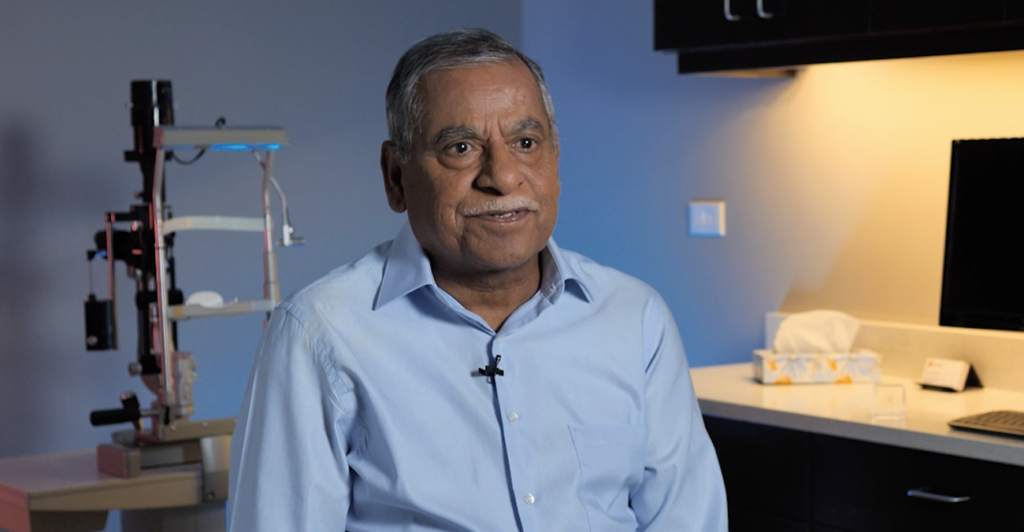Diabetic macular edema (DME) can be a challenging condition to treat. Mr. Singh, a 71-year-old diagnosed in 2003 with diabetes, faced a critical juncture when a routine eye examination revealed a problem in his retina. He was promptly referred to Veeral Sheth, MD, a seasoned retina specialist, who diagnosed him with DME. Dr. Sheth prescribed a couple of different DME treatments for Mr. Singh to determine which might work best. Dr. Sheth then identified a durable treatment option lasting up to 36 months to address and relieve Mr. Singh’s potentially life-altering condition.
Mr. Singh’s case is just one patient’s experience, and results may vary among patients. Nevertheless, Mr. Singh’s journey with DME demonstrates the importance of early intervention and exploring alternative treatment options. Through the use of ILUVIEN®, an implant with CONTINUOUS MICRODOSING™, Mr. Singh’s vision improved significantly, allowing him to more fully enjoy life with his family.
Initial Treatment & Setbacks
At the time of his referral, Mr. Singh’s OCT scan showed a significant increase in retinal thickness, and his vision was at 20/50, indicating mild visual impairment. After diagnosing his condition as DME, Dr. Sheth initiated treatment with anti-VEGF therapy, a common approach to DME that addresses leaking blood vessels in the retinal tissue by injecting drugs into the eye. After a month of treatment, there was no discernible improvement; the increased retinal thickness caused by the edema (inflammation) persisted, and Mr. Singh’s vision remained unchanged.
Recognizing the need for a different strategy, Dr. Sheth opted for a short-acting intravitreal implant to deliver corticosteroid to the affected eye. Over the next few months, Mr. Singh experienced a notable improvement. The retinal thickness was reduced, and his vision moved into the 20/40 range, showing a positive response to the steroid treatment. However, the edema eventually returned, leaving both Dr. Sheth and Mr. Singh to re-evaluate the therapy.
The ILUVIEN Solution
Eventually, Dr. Sheth suspected that Mr. Singh’s DME might not be primarily VEGF-mediated, and he began to consider an alternative approach. After assessing the past treatments, he noticed how well Mr. Singh responded to steroid injection therapy. So, it was then that he brought up ILUVIEN®, a micro-implant designed to release low doses of corticosteroid that could control his edema for up to three years. Mr. Singh was intrigued and agreed to get the ILUVIEN implant. Since then, the shift to ILUVIEN has brought about a significant change in his condition. With each subsequent visit, improvements were evident; his OCT scans showed reduced thickening, and his vision continued to improve more and more.
Mr. Singh’s Vision Today
Mr. Singh lives a fulfilling retired life with his daughter and granddaughter. His improved vision allows him to easily engage in his daily routines and activities. Mr. Singh enjoys 20/25 vision, and his intraocular pressure (IOP) has remained consistently low. His success story underscores the significance of early intervention and the potential benefits of ILUVIEN in saving vision. While results may vary from patient to patient, Mr. Singh’s story serves as an example of the positive impact ILUVIEN can have on those living with DME.
If you are experiencing vision loss or other symptoms of DME, don’t wait to see your eye doctor. DME can be better treated and controlled with early detection. Learn more about ILUVIEN at: https://iluvien.com/

